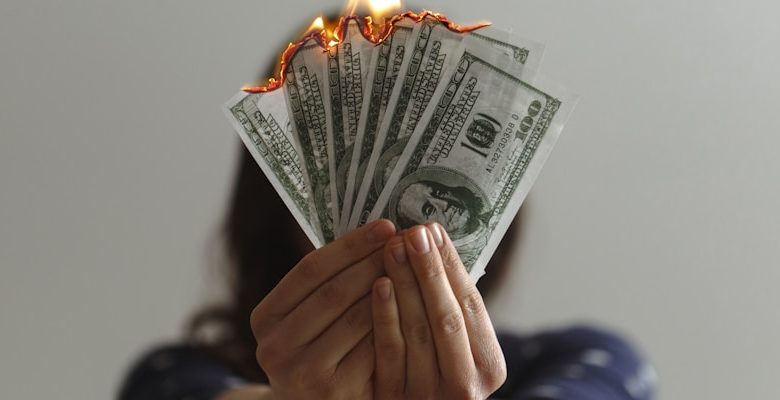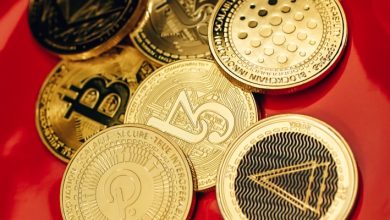The Impact of Token Burns on Price and Scarcity

- Understanding token burns and their effect on price
- Exploring the relationship between token burns and scarcity
- Analyzing the impact of token burns on market dynamics
- How token burns can create value for token holders
- Strategies for implementing token burns effectively
- The long-term implications of token burns on a project’s ecosystem
Understanding token burns and their effect on price
Token burns play a crucial role in influencing the price and scarcity of a cryptocurrency. When a project decides to burn a certain amount of tokens, those tokens are essentially taken out of circulation permanently. This reduction in the total supply of tokens can lead to an increase in their scarcity, which often results in a higher price for the remaining tokens.
Token burns are typically conducted for various reasons, such as to increase the value of the remaining tokens, to reward existing token holders, or to create a deflationary mechanism within the ecosystem. Regardless of the reason behind the burn, the impact on the price of the token can be significant.
By reducing the total supply of tokens, a burn can create a sense of scarcity among investors and traders, driving up demand for the token. This increased demand, coupled with a limited supply, can lead to a surge in the token’s price. As a result, token burns are often seen as a positive development for token holders, as they can potentially benefit from the price appreciation that follows.
It is important for investors to carefully monitor token burns and understand their implications on the price and scarcity of a cryptocurrency. By staying informed about token burn events within a project, investors can make more informed decisions about when to buy or sell tokens. Additionally, understanding the dynamics of token burns can help investors anticipate potential price movements and capitalize on investment opportunities in the market.
Exploring the relationship between token burns and scarcity
Token burns have become a popular method for cryptocurrency projects to increase scarcity and potentially drive up the price of their tokens. By reducing the total supply of tokens in circulation, burns can create a sense of scarcity among investors, leading to increased demand and, in theory, a higher price for the remaining tokens.
There is a direct relationship between token burns and scarcity – the more tokens that are burned, the scarcer the remaining tokens become. This can create a sense of urgency among investors to acquire tokens before they become even more scarce, driving up demand and, ultimately, the price of the tokens.
However, it is important to note that token burns are not a guaranteed way to increase the price of a token. While burns can create scarcity and drive up demand, other factors such as market conditions, investor sentiment, and the overall utility of the token can also impact its price.
Analyzing the impact of token burns on market dynamics
Token burns have become a popular strategy in the cryptocurrency market to influence supply and demand dynamics. By destroying a certain amount of tokens permanently, projects aim to reduce the total supply in circulation, theoretically driving up the value of the remaining tokens. This practice creates scarcity, which can lead to an increase in token prices as investors perceive the asset to be more valuable.
When analyzing the impact of token burns on market dynamics, it is essential to consider various factors that can affect the outcome. One key aspect is the timing and frequency of the burns. If token burns are conducted regularly and predictably, it can create a sense of stability and confidence among investors, leading to a positive impact on price.
Another factor to consider is the transparency of the burn process. Projects that provide clear and verifiable information about the amount of tokens burned can build trust with their community and attract more investors. This transparency can also prevent any suspicions of manipulation or fraudulent activity, which could negatively impact the token’s price.
Furthermore, the size of the token burn relative to the total supply is crucial. A significant burn of a large percentage of tokens can have a more pronounced effect on price and scarcity compared to a minor burn. However, it is essential to strike a balance and not burn too many tokens, as it could lead to a lack of liquidity in the market.
In conclusion, token burns can play a significant role in shaping market dynamics by influencing supply, demand, and perceived value. By understanding the factors that impact the effectiveness of token burns, investors can make informed decisions about their investment strategies in the cryptocurrency market.
How token burns can create value for token holders
Token burns can have a significant impact on the value of tokens for holders. By reducing the total supply of tokens in circulation, token burns effectively increase the scarcity of the remaining tokens. This scarcity can create a sense of value among holders, as the remaining tokens become more limited and therefore more desirable.
Additionally, token burns can also lead to an increase in the price of the remaining tokens. With fewer tokens available, there is less supply to meet the demand from buyers. This imbalance between supply and demand can drive up the price of the tokens, benefiting holders who have not sold their tokens.
Furthermore, token burns can help to increase the overall value of a project or platform. By reducing the total supply of tokens, token burns effectively increase the value of each individual token. This can attract more investors and users to the project, driving up demand for the tokens and ultimately benefiting holders.
Overall, token burns can play a crucial role in creating value for token holders. By increasing scarcity, driving up prices, and attracting more users, token burns can help to boost the value of tokens and benefit holders in the long run.
Strategies for implementing token burns effectively
Implementing token burns can have a significant impact on the price and scarcity of a cryptocurrency. However, to ensure that token burns are effective, certain strategies should be considered. One effective strategy is to schedule token burns regularly to create a sense of anticipation among investors. This can help generate buzz around the project and potentially drive up demand for the token.
Another strategy is to burn a significant amount of tokens each time to have a noticeable impact on the token’s scarcity. By burning a large number of tokens, the supply of the token decreases, which can lead to an increase in its value. Additionally, communicating the token burn effectively to the community is crucial. Providing transparency around the process and the reasons behind the burn can help build trust among investors and create a positive sentiment around the project.
Furthermore, collaborating with exchanges to facilitate the token burn process can help streamline the process and ensure that it is executed smoothly. By working closely with exchanges, the project team can ensure that the burned tokens are permanently removed from circulation, thereby increasing the scarcity of the token.
Overall, implementing token burns effectively requires careful planning and communication. By following these strategies, projects can leverage token burns to positively impact the price and scarcity of their cryptocurrency.
The long-term implications of token burns on a project’s ecosystem
Token burns can have significant long-term implications on a project’s ecosystem. By reducing the total supply of tokens in circulation, token burns can create scarcity and drive up demand for the remaining tokens. This increased scarcity can lead to higher token prices, benefiting holders and investors in the project.
Furthermore, token burns can also help to increase the value of the remaining tokens by making them more scarce and therefore more valuable. This can create a positive feedback loop where the increasing value of the tokens leads to more token burns, further driving up prices and scarcity.
However, it is important for projects to carefully consider the long-term implications of token burns on their ecosystem. While token burns can create short-term benefits, such as price increases and scarcity, they can also have negative consequences if not managed properly. For example, excessive token burns can lead to a lack of liquidity in the market, making it difficult for investors to buy and sell tokens.
Projects should therefore strike a balance between token burns and maintaining sufficient liquidity in the market. By carefully managing token burns and considering the long-term implications on their ecosystem, projects can create a sustainable and thriving ecosystem for their tokens.



